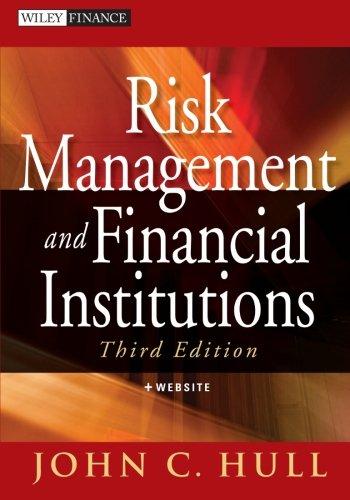Question
1. An investor with investment horizon of 10 years purchases a 12-year, semiannual coupon bond with coupon rate of 7.82%, yield to maturity of 7.24%,
1. An investor with investment horizon of 10 years purchases a 12-year, semiannual coupon bond with coupon rate of 7.82%, yield to maturity of 7.24%, and face value of $1,000. Just after buying the bond, the yield to maturity falls to 6.12% and stays at that level throughout the investment horizon. Calculate the investor's realized return if he reinvests his coupons to his investment horizon and sells the bond at that time.
Group of answer choices
7.04%
7.47%
6.88%
6.59%
7.94%
2. ABC and XYZ are identical firms in all respects except for their capital structure. ABC is all-equity financed with $600,000 in stock. XYZ uses both stock and perpetual debt; its stock is worth $240,000 and the interest rate on its debt is 9 percent. Both firms expect EBIT to be $78,400. Ignore taxes. The cost of equity for ABC is _____ percent, and for XYZ it is ______ percent.
Group of answer choices
13.07 percent; 19.17 percent
13.07 percent; 21.37 percent
12.35 percent; 19.07 percent
12.35 percent; 21.37 percent
3.Florida Groves has a $250,000 face value bond issue outstanding that is selling at 108 percent of face value. The firm also has 5,000 shares of preferred stock valued at $38 a share and 45,000 shares of common stock valued at $14 a share. What weight should be assigned to the preferred stock when computing the firm's weighted average cost of capital?
Group of answer choices
17.43 percent
15.21 percent
26.72 percent
33.33 percent
4.Katlin Markets is debating between a levered and an unlevered capital structure. The all-equity capital structure would consist of 90,000 shares of stock. The debt and equity option would consist of 70,000 shares of stock plus $400,000 of debt with an interest rate of 6.25 percent. What is the break-even level of earnings before interest and taxes between these two options? Ignore taxes.
Group of answer choices
$112,500
$125,000
$87,500
$75,000
5.The returns on the common stock of New Image Products are quite cyclical. In a boom economy, the stock is expected to return 46 percent in comparison to 16 percent in a normal economy and a negative 28 percent in a recessionary period. The probability of a recession is 25 percent while the probability of a boom is 30 percent. What is the standard deviation of the returns on this stock?
Group of answer choices
27.39 percent
21.42 percent
32.48 percent
38.11 percent
Step by Step Solution
There are 3 Steps involved in it
Step: 1

Get Instant Access to Expert-Tailored Solutions
See step-by-step solutions with expert insights and AI powered tools for academic success
Step: 2

Step: 3

Ace Your Homework with AI
Get the answers you need in no time with our AI-driven, step-by-step assistance
Get Started


